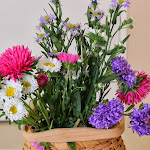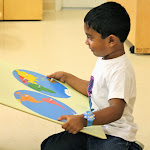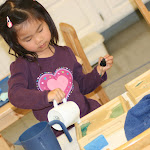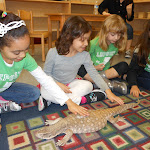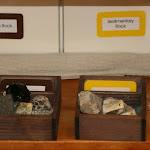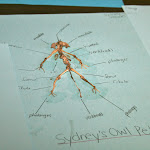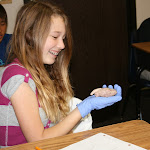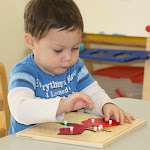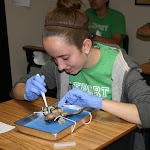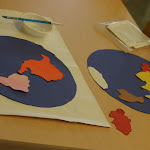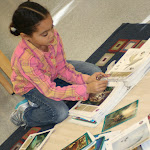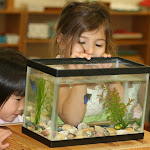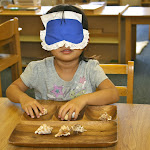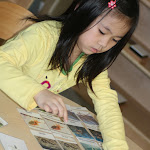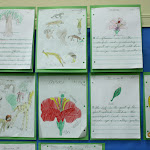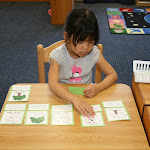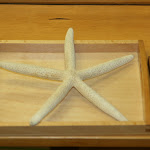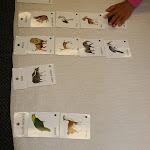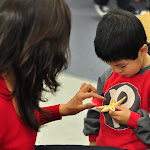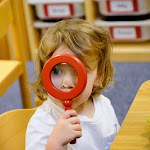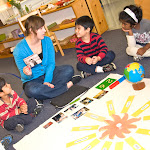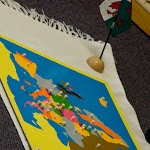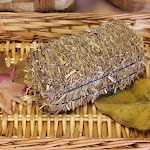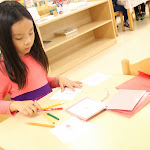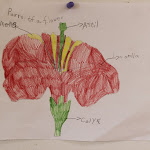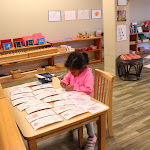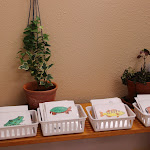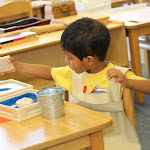Exploring The World
From botany to zoology, from physics to geography: LePort preschool and private school students love to learn about the world by experiencing it, not by memorizing words. See them in action!
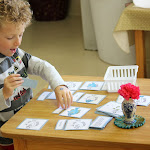
This four-year-old boy is working with a set of Montessori three-part cards to learn the correct anatomical terms for the parts of a fish. Many of our preschool/kindergarten children are strong enough readers to progress from "learning to read" to "reading to learn", many years earlier than their counterparts in traditional schools.

This boy is also working with shells. When this photo was taken, he literally spent half an hour just touching them, lifting them, looking at them. Nature, to preschoolers, is just so fascinating, and they enjoy having unhurried time during our extended work periods to explore to their heart's content!
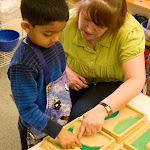
This preschool boy at the Irvine Montessori school near Woodbridge is receiving a geography lesson in land and water forms. He's learning that a strait is a narrow band of water between two bodies of land, and an isthmus is a narrow band of land between water. (Did you remember the meaning of those terms?)
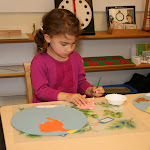
This four-year-old girl is making her own map of the world. First, she punched out the continents (a great exercise for her pencil grip and concentration!), and now she is gluing the map together. She may also label it. This hands-on experience enables her to remember a lot more of what she learned than if she had just completed worksheets-and it's so much more fun!



